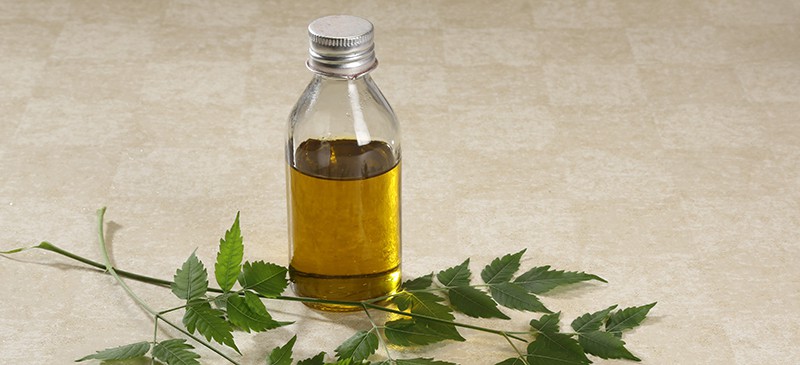It is becoming more and more popular to use natural insecticides, for home gardeners and commercial greenhouse gardeners alike. Botanical insecticides are among this group and are popular because they come from naturally occurring toxins derived from plants and most are on the OMRI list of organic pesticides. However, all botanical insecticides are not equal, and it’s important to know that while naturally derived insecticides can be much safer and are very effective, they’re not without risks. This article will outline some popular botanical insecticides, how they work and how safe they are to use.

Botanical Insecticides: Pros and Cons
Botanical insecticides are generally much better for the environment, because they degrade very quickly in the elements and leave less risk for runoff and other contamination. They are from plants and some types are much less toxic than conventional pesticides. However, they must be applied more accurately (at the right time and precise amount), reapplied more often and many are broad spectrum and will harm beneficial insects.
Pyrethrum
Pyrethrum is one of the most popular botanical insecticides because it breaks down quickly, has low mammalian toxicity and is generally very safe to use. The active compounds are derived from a type of chrysanthemum commercially grown in Africa. The flower can be ground to a powder and is called pyrethrum, but the active compounds are known as pyrethrins. There are synthetic versions as well, called pyrethroids, and may be found as permethrin, bifenthrin and cyfluthrin. Most insects are susceptible to even low concentrations and it causes a quick knockdown effect and paralysis, but many insects are able to process the compound and recover. Often, a synergist is added that makes the product much more successful. You can use pyrethrum products to control a wide variety insects, like ants, fleas, ticks, aphids and roaches.
Limonene and Linalool
These compounds, extracted from oranges and various other citrus peels, are present in many products outside of pest control applications, including soaps and lotions. They act as a contact nerve toxin to insects like fleas, aphids, mites, many types of flies and even fire ants. These compounds are regarded as safe, but in high concentrations can be irritating or toxic to mammals.
Neem
Neem is the name for the tree this compound is from. The active ingredient in neem oil is called azadirachtin and it can be extracted from all parts of the neem tree but most commonly it is extracted from the seeds. Neem has been used in India for hundreds of years for many cosmetic and medicinal applications as well and it has been found to have fungicidal properties. It acts as a repellent, feeding deterrent and insect growth regulator, but is most effective on very young life stages of an insect. Neem is becoming a more promising option because it is less likely for insects to become resistant to azadirachtin. Neem is also biodegradable and has a very low toxicity. It can be used on fruits and vegetables as well as ornamental plants and lawns and has been shown to control a wide variety of insects. Neem directly affects aphids, termites and some caterpillars. The downside to neem is that, while it has plenty of anecdotal evidence of controlling lots of insects, there is not a large body of research evidence that this product controls as many as claimed.
Rotenone
Rotenone is derived from the roots of South American root vegetables or legumes. This compound works as a stomach poison for insects and controls leaf feeding insects, although it may take several days for the product to take effect. You will likely see this product in a wettable powder or dust. It degrades when exposed to sun, soap, or lime. However, rotenone is fairly toxic to mammals, especially when inhaled, so wearing protective equipment when applying is important. This compound is very toxic to fish, so always use care and common sense if applying it anywhere near a pond or area where fish live.
Sabadilla
Sabadilla is from lily flowers from Central and South America. It is a contact insecticide and also a stomach poison when ingested by insects. It is often labeled to control vegetable pests like caterpillars, thrips, stinkbugs and various caterpillars. The powdered dust of these seeds is not dangerous to use and rated the least toxic botanical insecticide. However, when the seeds are treated a certain way, like by heating or treating with alkali, alkaloid compounds form. These compounds are extremely toxic to humans and mammals and can even cause death.
Nicotine
Derived from tobacco, nicotine is an alkaloid and works as a fast-acting nerve toxin that affects both insects and other animals. It is usually sold in a 40 percent nicotine sulfate and is commonly used to control sucking insects, like aphids and thrips. It can be used on certain fruits, a variety of vegetables and ornamental plants and trees, but not on roses. It can also be used on organically grown crops. Although it has been used for years as an insecticide, in its pure form, nicotine is considered a Class 1 poison, among the most toxic. It can easily penetrate skin, eyes and mucous membranes and is able to be inhaled and can potentially be fatal. Because nicotine is readily absorbed through skin, it is crucial to wear proper personal protection equipment when applying nicotine pesticide products.
Using Botanical Insecticides Safely
Even though they originate from plants, using these botanical insecticides does not mean they are to be used without necessary caution. They have become more widely used because they are much better for the environment and are a great choice for organic gardening and production, especially if a little help is needed to get rid of a major insect infestation. However, the insecticides still fall under the same regulations as synthetic pesticides and the same precautions should be taken. Organic gardens grown with botanical insecticides are not considered pesticide free. Remember, just because they may be less toxic than more traditional insecticides, it does not mean you can use more, or use them indiscriminately. Keeping plants healthy can ward of damage and disease, and insecticides are meant to help out if infestations are too much for plants to handle.
Jenny Gagas is a nature and lifestyle writer living in the Midwest, enjoying the beauty of the outdoors and always looking for ways to replicate that beauty in all areas of life. She writes about all kinds of bugs (the good and the bad!), pest control, and gardening at DoMyOwn.com.
Related Articles & Free Email Newsletter
Understanding Natural Pesticides
Understanding Stressed Trees: Insects, Disease & Environment




Comment here